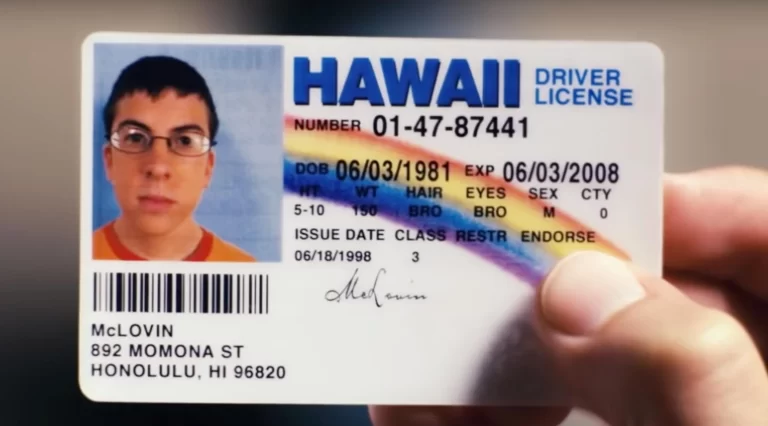Bank Robbery Prison Sentence (Read This Before You Rob a Bank)
Are you seriously contemplating bank robbery? Hold your horses! Before you don your ski mask and practice your “This is a hold-up” speech, let’s dive into the cold, hard facts about bank robbery prison sentences. Trust me, this isn’t a typical Hollywood ending.
Bank Robbery Prison Sentence: The Alarming Reality of Bank Robberies
Before we get into the reality of prison time, let’s look at some jaw-dropping statistics that’ll make you think twice about your “get rich quick” scheme:
- In 2022, 1,724 bank robberies were reported in the United States.
- What is the average take from a bank robbery? A measly $4,000.
- About 60% of bank robbers are caught within 24 hours. So much for that tropical island getaway, huh?
- Nearly 20% of bank robberies involve some form of violence or threat.
Definition and Classification of Bank Robbery
Bank robbery isn’t just a plotline for your favorite heist movie; it’s a serious federal offense with hefty consequences. At its core, bank robbery involves the taking or attempted taking of money, property, or other valuables from a bank, credit union, or savings and loan association by force, intimidation, or extortion.
Under federal law, bank robbery is classified as a felony, and the penalty for bank robbery can be as severe as 20 years in prison and/or a fine of up to $250,000. However, not all bank robberies are created equal. Here are the main types:
- Armed Bank Robbery: This is the stuff of action films, involving the use of a deadly weapon or device to intimidate or harm others during the heist. The presence of a weapon significantly ups the ante, leading to much harsher penalties.
- Aggravated Bank Robbery: Think of this as armed robbery on steroids. It involves not just a deadly weapon but also the infliction of serious bodily injury on another person during the crime. The consequences? Even more years in prison.
- Attempted Bank Robbery: Even if you don’t succeed in your heist, the attempt alone is enough to land you in hot water. Attempted bank robbery involves trying to take money or valuables by force, intimidation, or extortion, but failing to complete the act. The penalty? Still severe, because federal law doesn’t take kindly to even the attempt.
How Long Will You Be Trading Your Designer Suit for an Orange Jumpsuit in a Federal Bank Robbery?
Let’s cut to the chase – you want to know how long you’ll be cooling your heels in the slammer if you get caught, right? Severe cases can lead to life imprisonment. In extreme cases involving murder or kidnapping, the death penalty can be imposed.
Minimum Sentencing and Bank Robbery Prison Time
The federal bank robbery charges carry a minimum sentence of 10 years. Federal bank robbery laws, as defined under 18 U.S.C. § 2113, outline these minimum sentences. And that’s if you’re a perfect angel during the theft. Add a weapon or a threat of violence, and you’re looking at a minimum of 25 years.
Examples of Bank Robbery Sentences and Scenarios
Let’s play a little game called “Choose Your Misadventure”:
The federal bank robbery statute outlines various penalties for different types of bank robbery offenses. Federal bank robbery, as defined under 18 USC 2113, includes severe penalties for different scenarios.
- The “Polite” Robber:
- Scenario: You pass a note to the teller, no weapon visible, first offense.
- Sentence: 5-7 years in federal prison.
- Real-life example: In 2019, a man in Oregon robbed a bank using only a note. He was sentenced to 70 months in prison.
- The “I’ve Seen Too Many Movies” Robber:
- Scenario: You brandish a weapon, and threaten violence, but nobody gets hurt.
- Sentence: 15-20 years in federal prison.
- Real-life example: A Texas man who used a BB gun to rob multiple banks in 2018 was sentenced to 14 years in federal prison.
- The “I Fuc*ed Up” Robber:
- Scenario: You injure someone during the robbery or take hostages.
- Sentence: 25 years to life in federal prison.
- Real-life example: In 2021, a California man who shot a customer during a bank robbery was sentenced to 31 years in federal prison.
- The “Career Criminal” Robber:
- Scenario: Multiple offenses, violence, large sums stolen.
- Sentence: Life without parole.
- Real-life example: The infamous “AK-47 Bandit,” who robbed multiple banks across several states, was sentenced to life in prison plus 35 years in 2020.
- The “Insider Job” Robber:
- Scenario: You’re a bank employee who embezzles funds over time.
- Sentence: 10-30 years, depending on the amount stolen and the sophistication of the scheme.
- Real-life example: A former bank manager in Louisiana who embezzled over $1.5 million was sentenced to 10 years in federal prison in 2022.
Bank Robbery Statistics and Trends
Bank robbery might seem like a relic of the past, but it’s a very real and present danger. According to the FBI, bank robberies continue to plague communities across the United States. Let’s dive into some eye-opening stats:
- When It Happens: The majority of bank robberies occur on weekdays, during business hours. The most common time? Between 9:00 a.m. and 11:00 a.m. So much for a quiet morning at the bank.
- Who Does It: Most bank robbers are male, and they typically fall between the ages of 20 and 40.
- The Weapon of Choice: Firearms are a common tool in these crimes, with approximately 70% of bank robberies involving the use of a gun.
These statistics paint a clear picture: bank robbery is a calculated crime, often carried out with a deadly weapon, and it can happen when you least expect it.
Specific Types of Bank Robbery
Bank robbery isn’t a one-size-fits-all crime. There are several types, each with its methods and penalties:
- Traditional Bank Robbery: This is the classic scenario where a robber takes money or valuables from a bank, credit union, or savings and loan association by force, intimidation, or extortion. The penalty? Years in prison and hefty fines.
- ATM Robbery: In this type, the target is an automated teller machine (ATM). Robbers use force, intimidation, or extortion to get their hands on the cash inside. The consequences are just as severe as robbing a bank branch.
- Night Depository Robbery: This involves taking money or valuables from a night depository, often used by businesses to deposit cash after hours. Again, force, intimidation, or extortion are the methods, and the penalties are steep.
- Armored Truck Robbery: This high-stakes heist targets armored trucks transporting money or valuables. The use of force, intimidation, or extortion makes this a dangerous and highly punishable crime.
Each type of bank robbery carries serious penalties, including long-term imprisonment and substantial fines. If you or a loved one is facing charges for bank robbery, it’s crucial to contact a skilled criminal defense attorney immediately. They can help navigate the complex legal landscape and protect your rights.
By understanding the different types of bank robbery and their severe consequences, you can see why this crime is a fast track to a life behind bars.
Why Do People Rob Banks? (Hint: It’s Not Just About the Benjamins)
Now, let’s get into the twisted psychology of bank robbers. Sure, money is the obvious motivator, but there’s more to it:
- Desperation:
- Some robbers are drowning in debt or facing dire circumstances.
- Example: A man in Florida robbed a bank in 2022 because he couldn’t afford his wife’s medical bills.
- Thrill-seeking:
- For some, it’s about the adrenaline rush.
- FBI profiler John Douglas notes: “Some robbers are addicted to the thrill. It’s like a drug to them.”
- Misguided “Robin Hood” complex:
- Some think they’re sticking it to “the man”.
- Famous bank robber Willie Sutton allegedly said, “I rob banks because that’s where the money is.” (Though he later denied saying this.)
- Drug addiction:
- Many robberies are fueled by the need to fund a habit.
- According to a study by the Journal of Drug Issues, about 30% of bank robbers cite drug addiction as a primary motivator.
- Mental health issues:
- Sometimes, poor impulse control or other mental health factors play a role.
- A 2018 study in the International Journal of Law and Psychiatry found that a significant number of bank robbers had undiagnosed or untreated mental health conditions.
- Perceived lack of alternatives:
- Some robbers feel they have no other options to make money.
- Criminologist Richard Wright states: “Many bank robbers see it as a last resort, a desperate act when all other options seem exhausted.”
- Influence of pop culture:
- Movies and TV shows sometimes glamorize bank robberies.
- FBI Agent James Wedick observed: “Some criminals, especially younger ones, are influenced by the romanticized portrayal of bank robbers in media.”
A Word to the Not-So-Wise
If you’re reading this article because you’re genuinely considering robbing a bank, it’s time for some tough love. Take a deep breath, step away from the ski mask, and reevaluate your life choices.
Aggravated robbery, which involves more severe penalties, is classified as a more serious offense than simple robbery, resulting in higher felony classes and longer prison sentences across different states.
Under the Federal Credit Union Act, robbing a federal credit union carries specific legal implications. There are always alternatives, no matter how dire your situation seems. Robbing a bank isn’t just illegal; it’s a one-way ticket to ruining your life and potentially harming others.
DO NOT DO THIS
Seriously, I cannot stress this enough. Robbing a bank insured by the Federal Deposit Insurance Corporation carries severe penalties. Robbing a bank that is a member of the Federal Reserve System is also a serious federal offense. Here’s why robbing a bank is a terrible idea:
- High risk, low reward: The average bank robbery nets less than $5,000. Is that worth decades in prison?
- Violence begets violence: Even if you don’t intend harm, robberies can quickly escalate, putting lives at risk.
- You will get caught: With modern security systems and forensic techniques, it’s not a matter of if, but when.
- Lifelong consequences: A felony conviction will impact your job prospects, relationships, and freedoms for the rest of your life.
- Psychological trauma: Bank robberies can cause lasting trauma to employees, customers, and even the robbers themselves.
As the famous reformed bank robber John Dillinger once said, “My advice to the youth of today is to think twice before choosing a life of crime. It doesn’t pay in the long run.”
Frequently Asked Questions
- Q: What’s the difference between armed and unarmed bank robbery? A: Armed robbery involves the use or threat of a weapon, resulting in much harsher sentences (minimum 25 years vs. 10 years for unarmed robbery). The penalties also differ based on whether the target is a bank or financial institution. Under 18 U.S.C. § 2113, the term ‘financial institution’ includes various scenarios involving banks and credit unions.
- Q: Can I get probation for bank robbery? A: It’s extremely rare. Federal sentencing guidelines usually require prison time for bank robbery convictions.
- Q: What if I change my mind halfway through the robbery? A: Attempting to rob a bank, even if you don’t complete the act, is still a serious federal crime with severe penalties.
- Q: Are there any famous bank robbers who never got caught? A: While there are unsolved bank robberies, most famous bank robbers were eventually caught or killed. The romanticized idea of the successful career bank robber is largely a myth.
- Q: What happens if I rob a bank to pay for a life-saving medical treatment? A: While the court might consider your circumstances during sentencing, it doesn’t change the illegality of the act. You’d still face significant prison time.
Conclusion: Your Get Out of Jail Free Card (Sort Of)
Look, I get it. Life can be tough, and sometimes it feels like there’s no way out. But believe me, robbing a bank is never the answer. It’s a fast track to a jumpsuit wardrobe and a diet of mystery meat.
If you’re facing financial troubles or legal issues that have you even considering this path, there are better options. Consider reaching out to a legal professional who can help you navigate your challenges legally and safely.
As the legendary defense attorney Clarence Darrow once said, “True patriotism hates injustice in its own land more than anywhere else.” If you’re struggling, fight for change through legal means. Don’t become another statistic in the prison system.
Need legal advice? Don’t wait until you’re behind bars to seek help. Our partners at Legal Services offer confidential consultations to help you understand your options and rights. Remember, it’s always better to talk to a lawyer before you need one in court!







